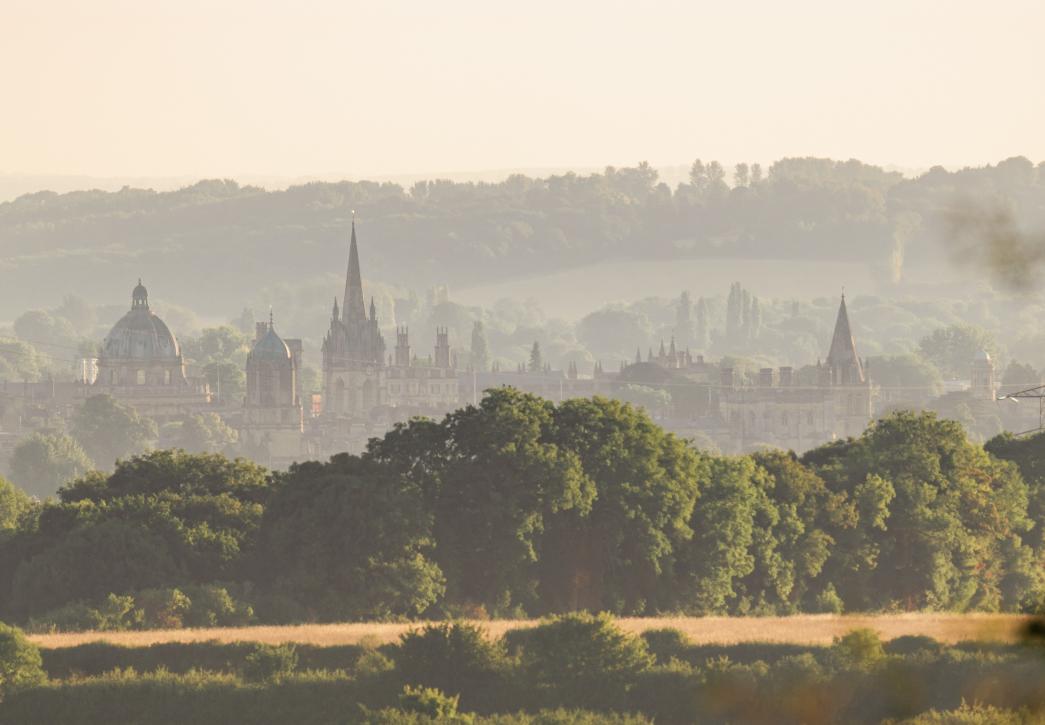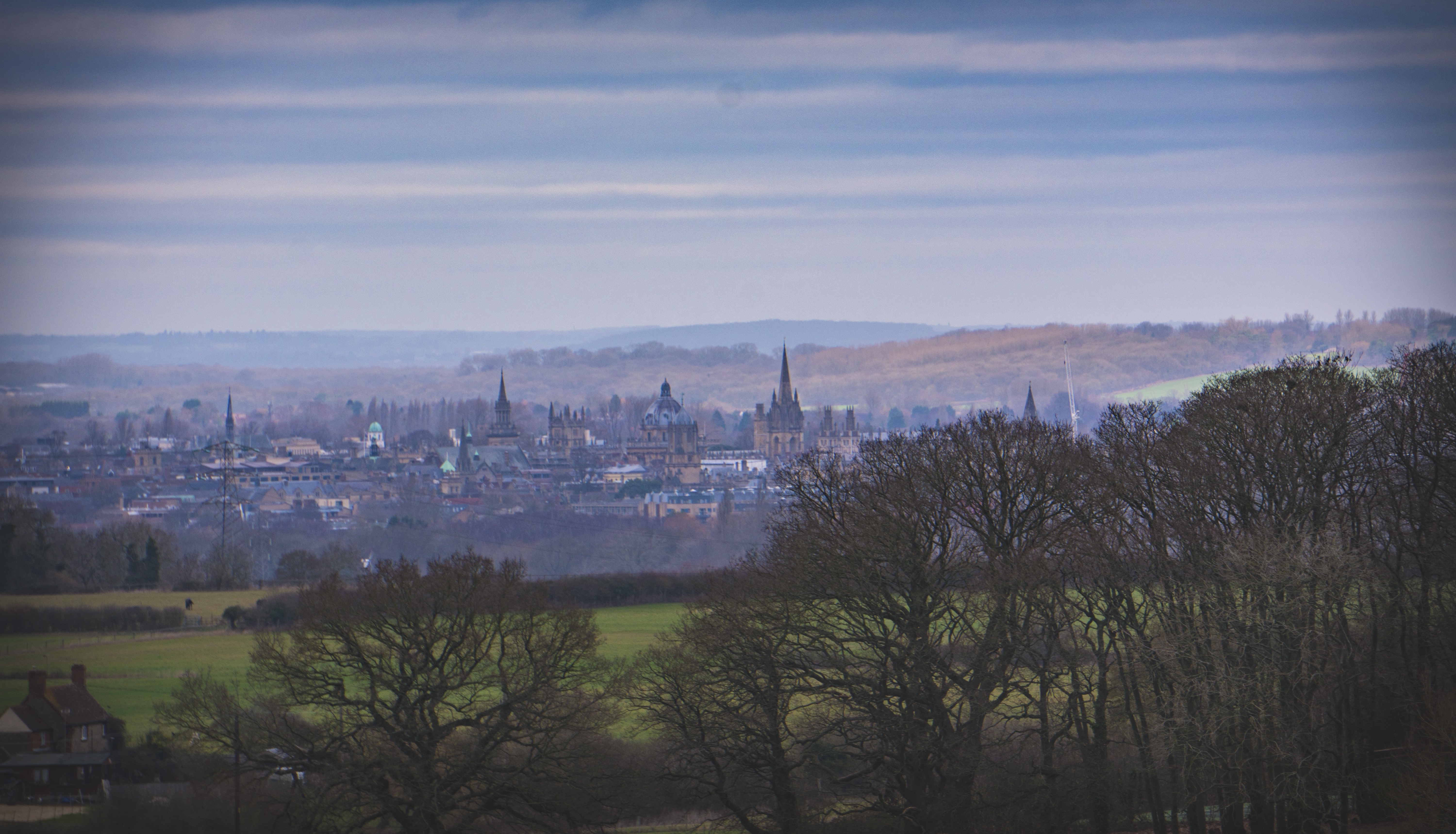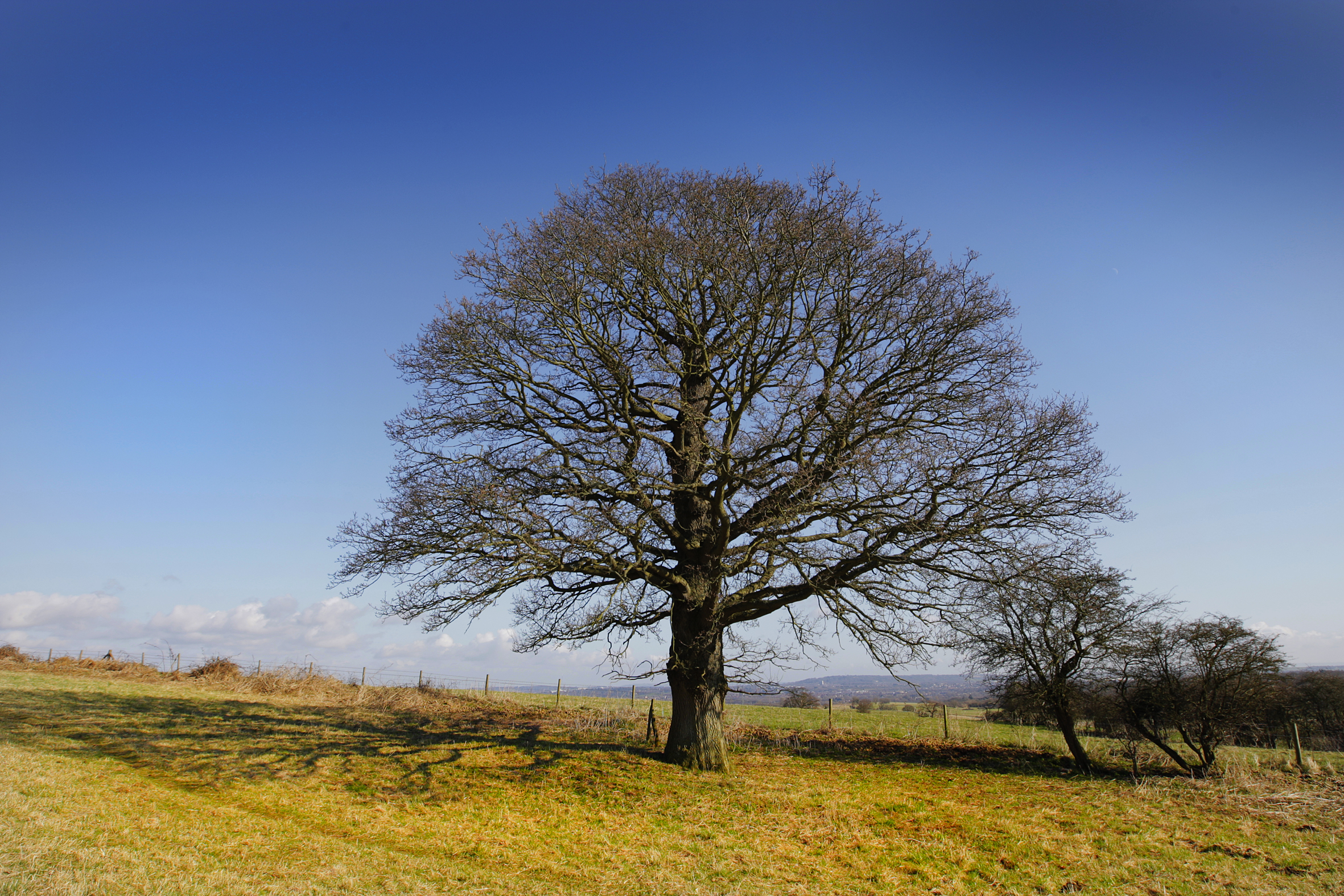
Boars Hill
Boars Hill lies to the south-west of Oxford, just outside of the ring road, past Chilswell and Bagley Wood. Boars hill was the home of numerous well-known poets and is famous for its view of Oxford’s dreaming spires. Its literary links go back to 1841, when Arthur Hugh Clough introduced Matthew Arnold to the area, inspiring – and providing the setting for – two of his best-known poems, The Scholar Gipsy and Thyrsis. Matthew Arnold's fame drew people to the hill. It became home to other artists and poets, including Robert Bridges, John Masefield, Robert Graves, Edmund Blunden and Elizabeth Daryush.
Boars Hill was where OPT first acquired land in the late 1920s. We have with the support and generosity of many people, continued to acquire, improve and provide public access to land here ever since. Today we are the largest landowner on Boars Hill with nearly 200 acres of fields, woods and gardens.

Old Berkeley Golf Course
This was the very first piece of land purchased by OPT. It was acquired in 1928 to preserve the stunning view of Oxford, then threatened with the possibility of housing development.
This spot provides one of the best vantage points to enjoy uninterrupted views over the city of Oxford. Once Lord Berkeley’s private golf course, the fields are now maintained as unimproved grassland, grazed by sheep and cattle. The area is an environmental and cultural gem and continues to attract and inspire painters, photographers, poets, and occasionally film crews. In 2023, the fencing and gates along Berkeley Road and Foxcombe Road was replaced to make the space more secure and improve accessibility.
Old Berkeley Golf Course is open to the public. When walking through these fields, please ensure dogs are kept under control and within sight especially within fields where sheep and cows are present.
Abraham Wood
In 2000, this small area of woodland were donated to OPT in memory of longstanding trust members Sir Edward and Lady Abraham. The woodland contains areas of wild garlic, a mix of deciduous and coniferous tree with some veteran oak trees and a beautiful walk to the public. In spring the woodland comes to life with a carpet of bluebells.
Our management of the wood involves controlling invasive species and encouraging the growth of flowering plants, especially bluebells, to increase biodiversity.
Abraham Wood is open to the public – please stay on the path.
Elizabeth Daryush Memorial Garden
This landscaped wildlife garden is a memorial to the Bridges family. Ali Akbar Daryush bequeathed the house and garden to OPT in 1989. It was once part of the garden of the home of Ali Akbar and Elizabeth Daryush.
The garden has been designated a Local Wildlife Site for its unimproved acid grassland, which is rare in Oxfordshire, and a place where bee orchids can be found in the late spring. We want to increase the biodiversity even further and our volunteers assist with this by monitoring the pond and keeping it clear of invasive species as well as maintaining bird boxes and feeders.
The Elizabeth Daryush Memorial Garden is open to the public.

Lincombe Lane Field and Reserve
OPT purchased the land at Lincombe Lane in three lots between 1937 and 1940 from Abingdon Rural District Council.
The space offers extensive views of Didcot and the Berkshire Downs to the south, and of Princes Risborough and the Chiltern Hills to the east. The upper part of the space is the field which is grassland / heathland and grazed. The lower part, the reserve, is valley fen covered with woodland which is over a century old. The area is a Local Wildlife Site because of the unimproved grassland and wet flush, valley fen, which are both rare in Oxfordshire.
A map of 1886 shows the land as open hills with Rye Hill Barns occupying the site of what were once Roman Pottery kilns.
Lincombe Lane is open to the public
Jarn Mound and Wild Garden (volunteering sessions here)
OPT purchased Jarn Mound and Wild Garden in 1929. The name ‘Jarn’ originates in the traditional name for the western side of Boars Hill. Jarn Mound and Wild Garden are part of the Jarn Mound Complex, created by famous archaeologist Sir Arthur Evans, who lived on Boars Hill for over 40 years. He was passionate about protecting the area and maintaining its beauty for others to enjoy.
Jarn Mound was designed by Evans and completed in 1931. It had taken 20 men 34 months to build. At 50 feet high, it is topped by a pillar and topograph, acting as a lookout. Today, the far-reaching views so admired by Sir Arthur Evans have been obscured by trees that have grown on surrounding land.
Alongside, Sir Arthur created his Wild Garden, a forerunner of the Eden Project, perhaps the first of its kind, introducing different soil types, and an extensive range of British plants. OPT is keen to restore the Garden, the landscape and at least some of the views.
Jarn Mound and Wild Garden are open to the public.

Jarn Field
Lying between the Jarn Wild Garden and The Ridgeway, the Jarn Field formed part of the acquisition of land in the Jarn Mound Complex in 1929. Jarn Field is managed by carrying out an annual hay cut in the summer.
Jarn Field is open to the public.
Jarn Heath
This important piece of land between Jarn Mound and Matthew Arnold Field was bequeathed to OPT in 1941. Jarn Heath was once an open field and was used as allotments during WW2. Nowadays, the area is a woodland with some veteran-pollarded oak trees scattered throughout. In the last five years, we have re-opened views, cleared paths, and put in many bird and bat boxes here.
Jarn Heath is open to the public.

Matthew Arnold Field and Reserve
Dedicated to the memory of the poet Matthew Arnold, this field and wood at the end of Jarn Way is an important part of the adjoining Jarn Mound complex. OPT purchased the field in 1929 with financial support from both sides of the Atlantic.
This site is made up of two areas – a field on the upper land at the end of Jarn Way and a wooded area on the lower slope (the reserve) which is rare valley fen that OPT has restored. Matthew Arnold Field originally offered views across the Vale of the White Horse to the Berkshire Downs. However, much of the view originally seen from the site is now obscured by trees. The field is a sea of yellow buttercups in summer, and the circular footpath through the reserve is popular with walkers and visitors throughout the year who enjoy the range of flora and fauna the ponds and woodland have to offer. Matthew Arnold Reserve is a woodland where oak, cherry and birch trees grow on the sandy soil.
Matthew Arnold Field and Reserve is open to the public.
Bus stop corner
Bus stop corner is a little piece of social history in a corner of the beautiful Boars Hill area. It was purchased by Mr and Mrs Pilkington and given to OPT in 1934. This little pocket of land contains a historical bus stop shelter, and it was given to OPT to preserve the rural character of the area. Today it offers locals and visitors to the area a place to sit, rest and reflect before continuing on with their walk.
Bus stop corner is open to the public.
Chilswell Fields
Chilswell Field are wide, open pastures with an important role to play in maintaining the landscape setting of Oxford and its dreaming spires. In 2005 OPT acquired five fields adjoining the Old Berkeley Golf Course with support from the Heritage Lottery Fund, local charitable trusts and generous individuals. The field is grazed.
Chilswell Field are open to the public. When walking through these fields, please ensure dogs are kept under control and within sight especially in fields where livestock are present.
Signal Elm Field

Signal Elm field has a spectacular view and was the source of inspiration for famous poet Matthew Arnold. OPT purchased the field in 2009 from All Souls College through public donations.
This field provides a compelling view of Oxford’s ‘dreaming spires’. The famous signal elm is actually an oak tree, which the poet Matthew Arnold saw when he was out walking here, and the tree was immortalised in his 1865 poem ‘Thyrsis’.
Runs it not here, the track by Childsworth Farm,
Up past the wood, to where the elm-tree crowns
The hill behind whose ridge the sunset flames?
The signal-elm, that looks on Ilsley Downs,
The Vale, the three lone weirs, the youthful Thames?
Signal Elm field is grazed by horses, and the land is open to the public. When walking through these fields, please ensure dogs are kept under control and within sight especially within fields where cattle are present.
Tommy’s Heath
This small woodland was acquired by OPT in two sections. A rectangular plot was purchased in 1932; the reasons have not been documented. The second piece, a triangular section was given to the Trust by Sir Arthur Evans in 1940. The area used to be a heathland and is now a mixed woodland.
Tommy’s heath is open to the public.
